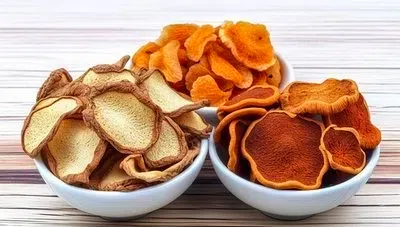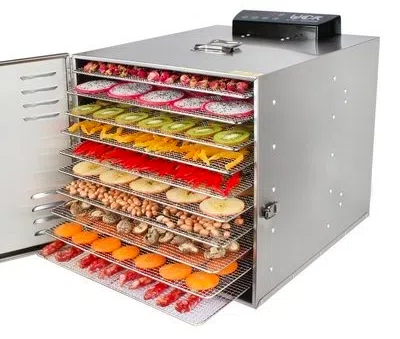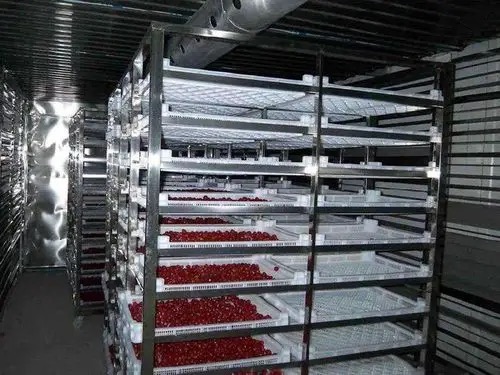
Content Menu
● Introduction
● Understanding Food Drying
● Types of Food Drying Machines
>> Conventional Food Dehydrators
>> Commercial Food Dryers
>> Solar Food Dryers
● Benefits of Using Food Drying Machines
● Choosing the Right Food Dryer
● Tips for Effective Food Drying
● Common Mistakes in Food Drying
● Conclusion
● Frequently Asked Questions
>> 1. What foods can be dried at home?
>> 2. How long does it take to dry food?
>> 3. Can I use my oven to dry food?
>> 4. What is the best way to store dried foods?
>> 5. Are there any health benefits to eating dried foods?
Introduction
Food drying is an ancient preservation method that has stood the test of time, allowing people to enjoy seasonal produce year-round. With the advent of modern technology, food drying machines have become essential tools for both home cooks and commercial food producers. This article explores the various types of food drying machines, their benefits, and tips for effective food drying.

Understanding Food Drying
Food drying involves removing moisture from food to inhibit the growth of bacteria, yeasts, and molds. Historically, this method was used by ancient civilizations to preserve fruits, vegetables, and meats. Today, food drying is not only a means of preservation but also a way to enhance flavors and create healthy snacks.
Types of Food Drying Machines
Conventional Food Dehydrators
These machines are designed specifically for drying food. They typically feature multiple trays and adjustable temperature settings, allowing users to dry a variety of foods efficiently. Ideal for fruits, vegetables, and herbs, conventional dehydrators are a popular choice for home users.
Commercial Food Dryers
For businesses, commercial food dryers offer larger capacities and more robust features. These machines are built to handle high volumes of food and are often used in the production of dried fruits, jerky, and snacks.
Solar Food Dryers
Eco-conscious consumers may opt for solar food dryers, which utilize sunlight to dehydrate food. While they are energy-efficient, their effectiveness can vary based on weather conditions.

Benefits of Using Food Drying Machines
Using food drying machines offers numerous advantages. Dried foods retain most of their nutrients, making them a healthy option for snacking. Additionally, drying food at home can be cost-effective, allowing individuals to preserve seasonal produce and reduce waste. The convenience of having dried fruits and vegetables on hand for cooking or snacking is another significant benefit.
Choosing the Right Food Dryer
When selecting a food dryer, consider factors such as capacity, temperature control, and energy efficiency. Popular models include the Excalibur and Nesco dehydrators, known for their reliability and performance.
Tips for Effective Food Drying
To maximize the effectiveness of your food dryer, follow these best practices:
1. Prepare Food Properly: Wash and slice fruits and vegetables evenly to ensure uniform drying.
2. Pre-treat Certain Foods: Some foods, like apples and bananas, benefit from pre-treatment with lemon juice to prevent browning.
3. Monitor Drying Times: Each type of food has specific drying times; refer to guidelines for best results.
Common Mistakes in Food Drying
Avoid these common pitfalls:
1. Overloading the Dryer: This can impede airflow and lead to uneven drying.
2. Neglecting Pre-treatment: Failing to pre-treat foods can result in undesirable flavors and textures.
3. Ignoring Storage Conditions: Proper storage is crucial for maintaining the quality of dried foods.
Conclusion
Food drying is a valuable skill that not only helps preserve food but also enhances flavors and provides healthy snack options. With the right food drying machine and techniques, anyone can enjoy the benefits of dried foods at home.

Frequently Asked Questions
1. What foods can be dried at home?
A variety of fruits, vegetables, herbs, and meats can be dried effectively at home.
2. How long does it take to dry food?
Drying times vary based on the type of food and the drying method used, typically ranging from a few hours to a full day.
3. Can I use my oven to dry food?
Yes, an oven can be used for drying food, but it may not be as efficient as a dedicated food dehydrator.
4. What is the best way to store dried foods?
Dried foods should be stored in airtight containers in a cool, dark place to maintain freshness.
5. Are there any health benefits to eating dried foods?
Dried foods retain most of their nutrients and can be a healthy snack option, providing concentrated flavors and energy.












